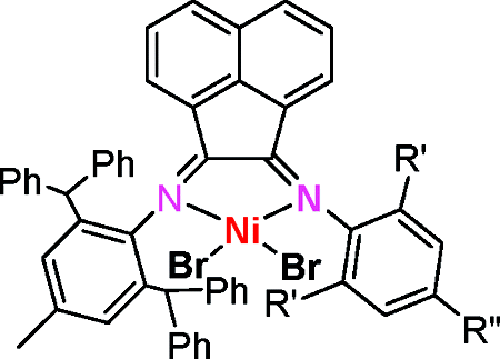The synthesis and characterization of a class of nickel-based ethylene polymerization catalysts ligated by new bulky unsymmetrical R-diimines have been reported by researchers from Institute of Chemistry, University of East Anglia and Lanzhou Institute of Chemical Physics of the CAS.
Despite the fact that there have been many reported R-diimine systems in the literature, the unsymmetrical R-diimine presented represents a new research avenue for R-diimine catalytic systems. On treatment with the cocatalysts Et2AlCl and MAO, these complexes afforded outstanding catalytic activity in the range of 107g of PE (mol of Ni)-1h-1, and the polyethylenes obtained exhibited a high degree of branching. Thus, the homopolymerization of ethylene by the current nickel procatalysts provided highly branched polyethylenes; the degree of branching varies at different temperatures. The use of the ligand systems described herein with other metals, as well as the polymerization of other monomers, will be reported separately.
In comparison with early-metal-based systems, late-transition metal catalysts have some unique features which have led to great interest in this field in the last few decades. In general, late-transition-metal olefin oligo-/polymerization catalysts tend to utilize one of the metals iron, cobalt, nickel, and palladium. Both iron(II)- and nickel(II)-based systems have been shown to be very adaptable in terms of their ability to afford a variety of products. This has been achieved by simple tuning of the ancillary ligand set, which allows the product compositions to vary from that of small oligomers to high molecular weight polyethylene with narrow molecular weight distribution. In the case of R-diimines, either the ligand backbone or the substituents associated with the N-bound aryl can readily be manipulated to suit the required electronic and/or steric features. Although substantial work has been conducted on substituent variation for the diimine ligand set, unsymmetrical diimine ligands still remain rare.
The work has received support from the National High-tech R&D Program of China. The findings have been published in Organometallics (Organometallics 2011, 30, 2418–2424).



